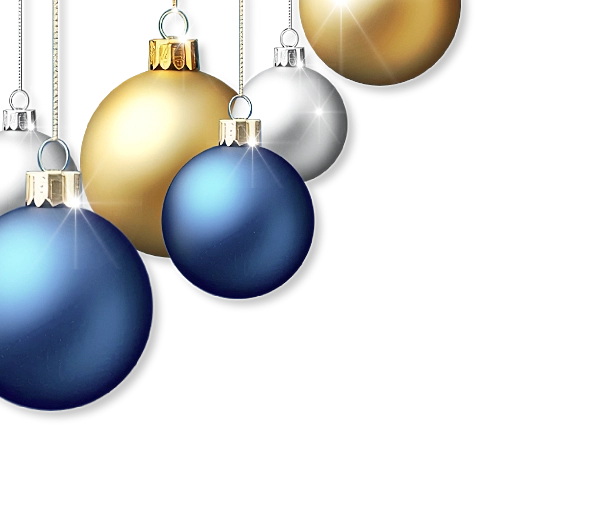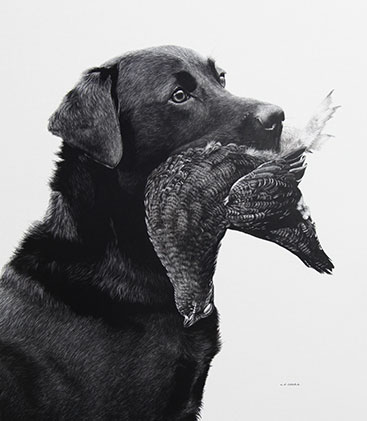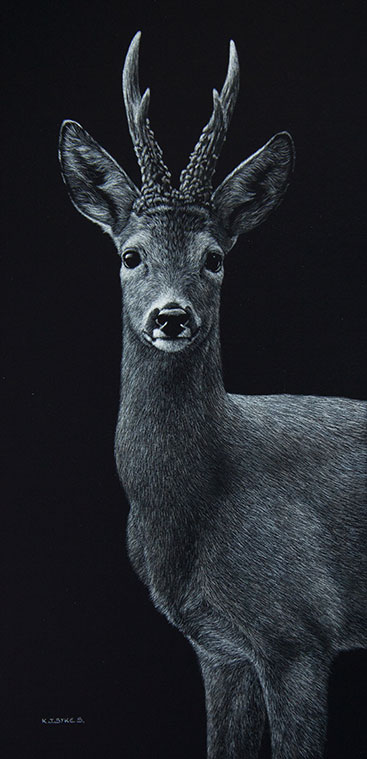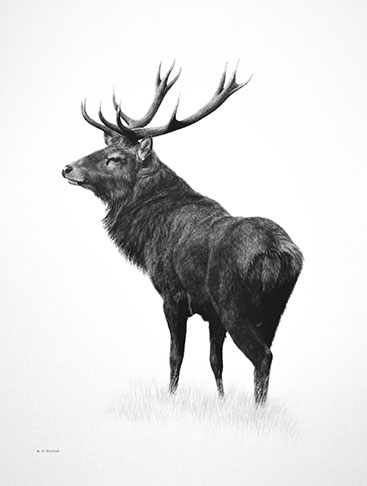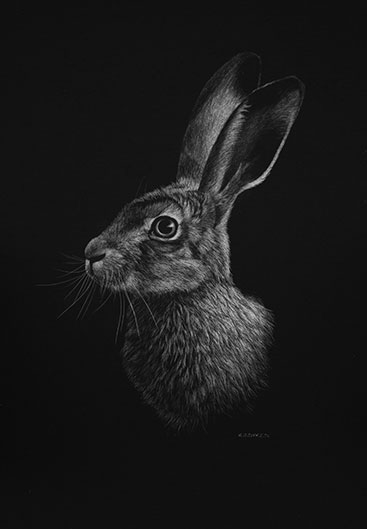Keith Sykes' beautiful and incredibly detailed artwork, which takes inspiration from shooting sports, working dogs and wildlife, recently caught our eye. We asked Keith ten questions about his life and work:
What started you on an artistic career?
Since childhood I enjoyed drawing and painting, and as with many who enjoy fieldsports, I wanted to try and capture in art the images and atmosphere of the experiences I enjoyed. From my early twenties whilst working full time for the NHS I began a part-time career as an artist. In 2003 I was invited to join the Redspot group of artists; I exhibited with them at the 2003 CLA Game Fair and from then the demand for my artwork began to grow to the extent that in 2009 I decided to follow my passion to become a full time artist.
You currently work a lot on scraperboard – how did you arrive at the use of this less-traditional medium, and how do you feel it impacts upon your work?
Due to demand I currently have to work solely on Scraperboard despite the desire to experiment with other media. Although not very commonly used these days, Scraperboard (or Scratchboard as the Americans refer to it) originated in the nineteenth century and was widely used for illustrations in various publications throughout the last century. Well before the invention of CAD and also in the last century I used to produce architectural drawings on a drawing board, there are many similarities with architectural drawing and the use of Scraperboard, both involve the use of ink, require an appreciation of composition and attention to detail, the production of clean accurate lines and a clinically clean work station. Because the basic technique of using scraperboard is to scratch through the inked surface to reveal the white hardened china clay background, the medium is perfect for depicting hair and texture by hatching to creating light and shade, there are so few elements in monochrome that light is massively important, but it is no coincidence that most of my subjects are hairy! I am probably fortunate that relatively few other artists work with Scarperboard so my black and white pictures are slightly different from the norm.
Working dogs, British wildlife and Big Game feature largely in your work – what inspires you in particular about these as subjects?
I have a passion for all of them and in general they are hairy so work well with scraperboard. Within those categories there are a great variety of subjects, some are more commercial than others, despite that it is satisfying to cover different species and address the challenges they bring. With dog portraits in particular the artistic challenge is to replicate the looks, character and personality of each individual and to a certain extent the same applies to wildlife, for example the contrast between a she Roe Doe to the grumpy Cape Buffalo daggaboy! I was fortunate this year to witness the Great Migration in the Kenyan Masai Mara, this has provided a mass of inspiration and reference that I am looking forward to using. But dog portrait commissions still form the majority of my work.
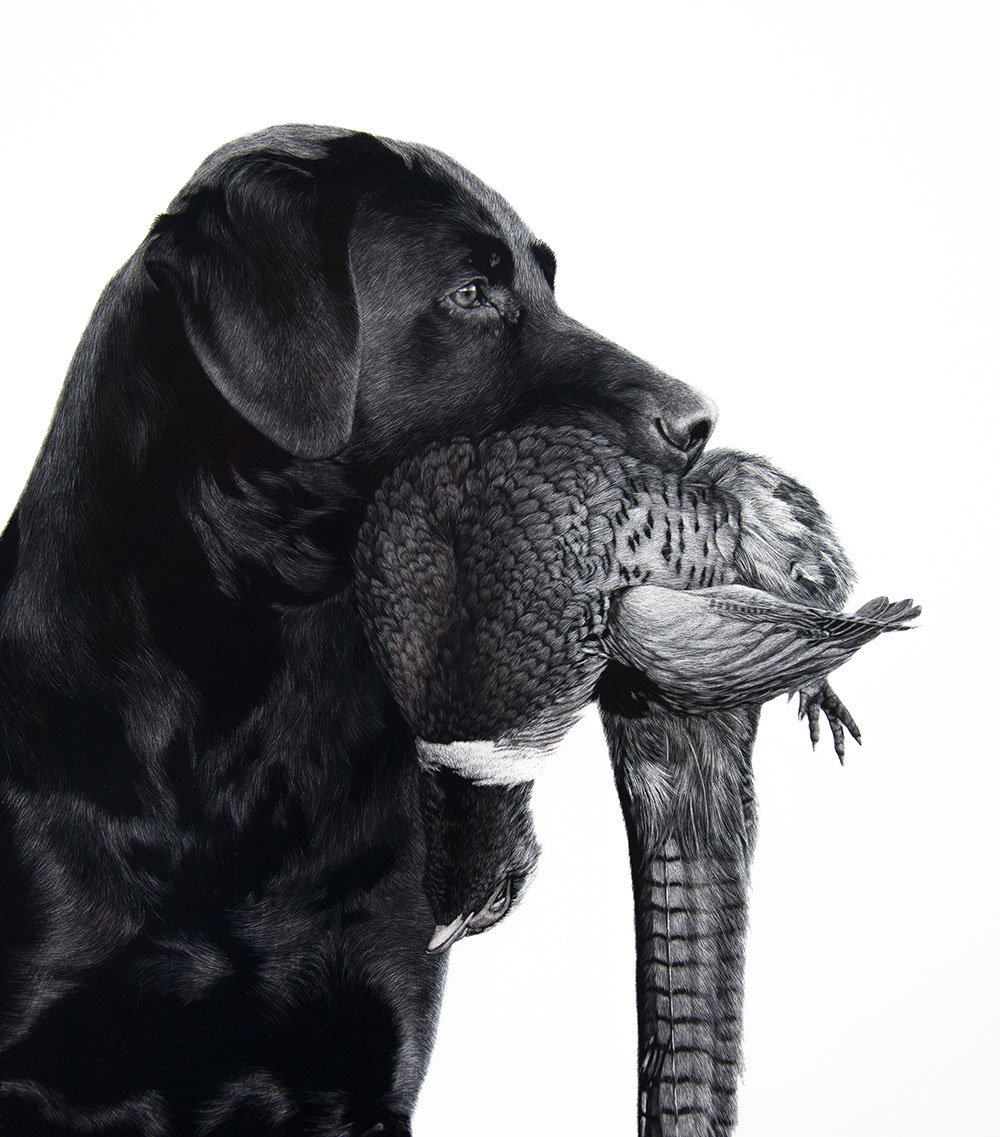
Do you have a typical working process when completing a piece?
The first thing is to study the available reference and decide on a composition. For dog portraits it is essential to have good reference in order to achieve an accurate likeness. Whenever possible I like to meet the animal to assess the character and record my own reference photographs. The technique in producing the work varies, sometimes I seek the effect of a black background and work on pre-inked Scraperboard, alternatively I might prefer to have a white background and therefore apply ink only to specific areas of the board. This can be done with a brush, airbrush, sponge or even rollers. Then begins the scratching process in order to remove the ink and create visual depth and detail. I understand that many artists begin with the subject’s eyes, I tend to leave those until last and work on the less intricate areas first. Scraperboard is very unforgiving in the event of a mistake so the composition and process must be well planned and no details overworked at the early stages of removing the ink. I particularly enjoy beginning a new piece of work and the satisfaction of the last few hours when bringing the subject to life (hopefully…). Much of the detailed work is undertaken under a magnifying glass.
Your work has been featured in publications such as the Shooting Gazette, The Field, and in numerous books - what do you hope to achieve by sharing your artwork with the world?
Ultimately I hope people gain some pleasure from my artwork. I am increasing mindful of the importance of publicity with regard to the promotion of my images and I am very fortunate that the publications you list do occasionally and kindly feature my work. The magazines and books are read by likeminded people who enjoy country sports, working dogs, horses and British wildlife. Most sporting magazines have historically promoted sporting art with editorial features, obviously a lot of those who enjoy fieldsports enjoy “sporting art” and so the world goes round and hopefully it will continue to do so. I don’t know many who shoot and don’t have some shooting related artwork displayed in their home, this can of course be affected by and proportional to marital status!?
You have an upcoming major exhibition (10-13 October 2017) with other countryside and sporting artists in aid of the charity XLP, which helps create positive futures for young people in London’s most deprived boroughs – why the link between countryside art and the inner city?
As well as helping to provide vital funds for the XLP charity I hope the exhibition and artists are able to inspire some of the less privileged young people to venture into the countryside in order to enjoy wildlife, help them to understand and appreciate conservation, countryside management and the importance of fieldsports to rural communities and the rural economy. It will be a refreshing change from preaching to the converted and a wonderful opportunity to present and share a taste of what we enjoy.
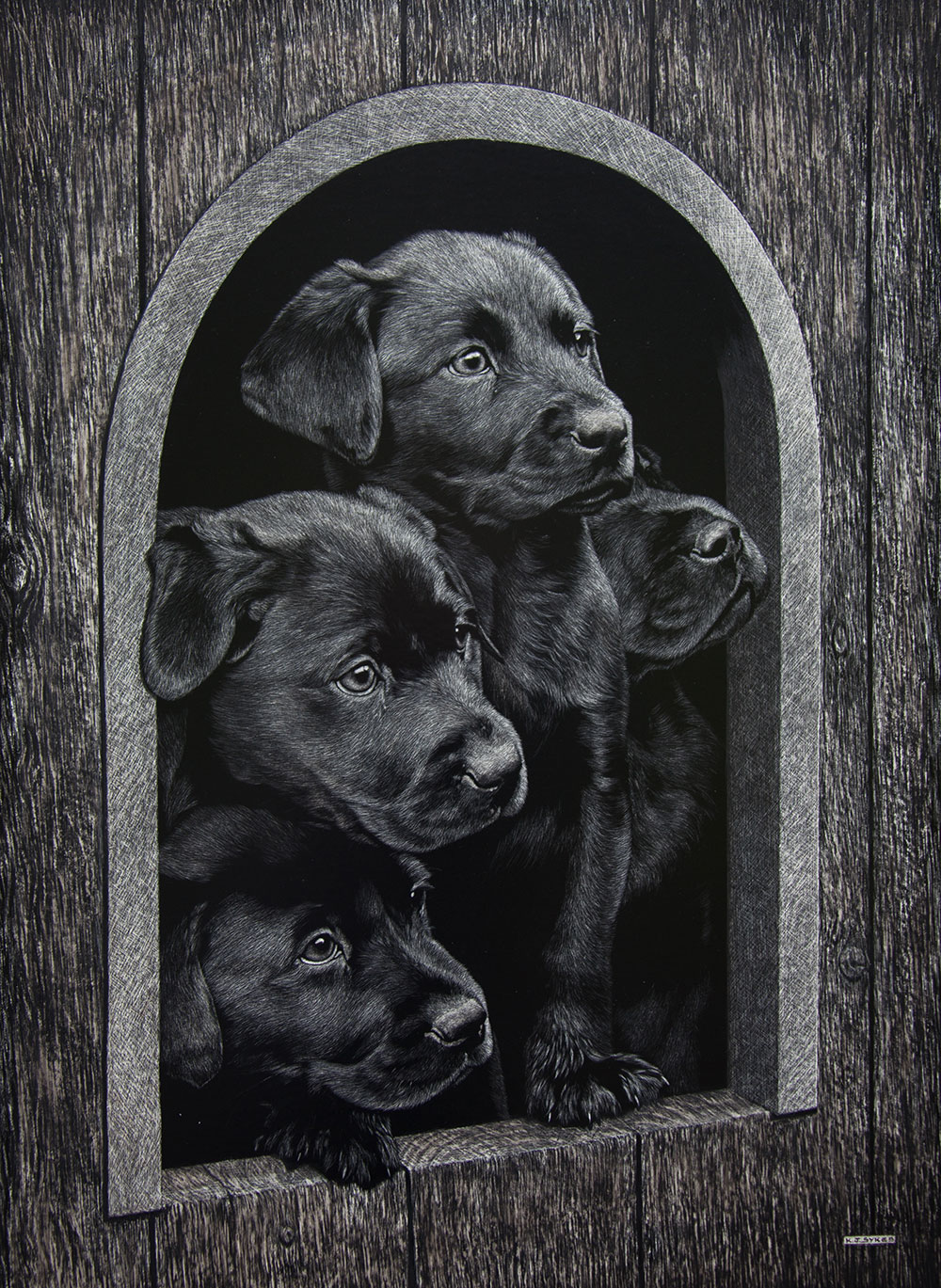
The majority of your work is commissioned. What is the most enjoyable commission you have received to date?
I haven’t had a commission that has been particularly more enjoyable than others, almost without exception, all commissions are enjoyable and often the most enjoyable part of commissions is meeting the owner and the subject, it is even nicer if and when I have to travel to foreign lands in order to take the reference photographs. Some animals make my life easy by posing beautifully but many haven’t been so obliging.
Who are some of your favourite artistic inspirations?
I am always inspired by the work of my fellow Redspots who are (in alphabetical order…) Ben Hoskyns, Sam MacDonald, Rodger McPhail, Jonathan Sainsbury, Tania Still, Jason Sweeney and Owen Williams. There are also many other wonderful contemporary artists, too many and dangerous to list for fear of excluding anyone who might be offended. I am inspired by many very different artists from Sir Edwin Landseer to David Hockney.
What piece of artist’s equipment couldn’t you live without?
Every item I use is essential to my work and I wouldn’t be happy to give up any of them, however, I would probably struggle most without my “air-duster”. The process I use creates a fine layer of ink/clay dust on the surface of the work, if I applied pressure to this dust on a white background it would smudge and leave dark patches which would be difficult to remove. So I have to avoid touching the surface of the scraperboard and always lean on clean paper, every ten to fifteen minutes I apply a blast of compressed air via an “air-duster” nozzle to remove the deposits very fine dust from the surface of the picture and drawing board, this also removes the residue from the fine scratches. Even using a fine cloth or brushing the dust away would mark the white surface.
Do you shoot?
Shooting has been and continues to be a massive part of my life and I am very pleased that this passions has also been adopted by my two Sons. From an early age my Father introduced me to wildfowing, rough shooting , rabbiting with a .22 rifle and clay pigeon shooting, all of which I still enjoy. I have been very privileged to shoot driven game in the best of company and stalk deer in some of the most beautiful areas of the country. But as with many of my friends, particularly the artists, I derive much enjoyment from watching others shoot and I am delighted to watch them pull the trigger - especially if I am armed with a camera.
Find out more...
You can see more of Keith's work and contact him via his website: www.kjsykes.com
